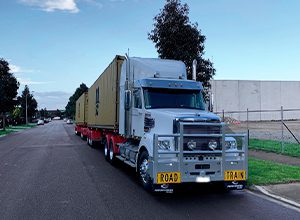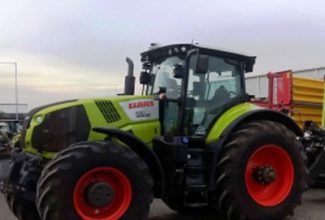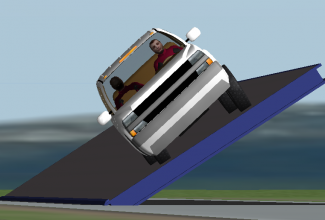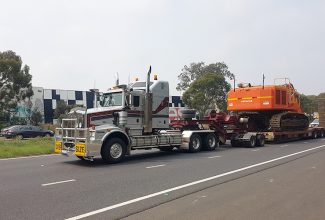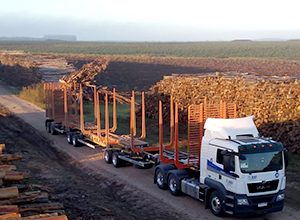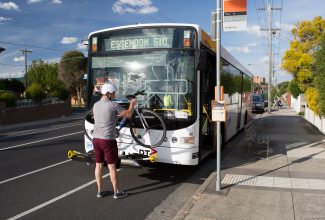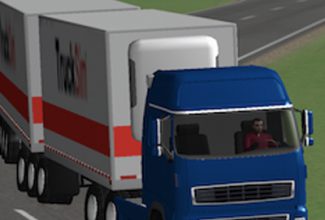Using heavy vehicle simulation to investigate a logging truck crash in Scandinavia
Advantia’s heavy vehicle simulation expertise was called upon to investigate an incident involving a logging truck and trailer combination that rolled over on a curved freeway access ramp near the Swedish-Norwegian border. Project summary by Adam Ritzinger.
Advantia was engaged by the Swedish branch of the international professional services consultancy, WSP Group, who were investigating the incident on behalf of the Accident Investigation Board of Norway (AIBN).
WSP Group recognised Advantia as being best-placed to provide technical services, having the capability to reconstruct heavy vehicle crashes using computer simulation, backed up by extensive experience in heavy vehicle dynamics and crash investigation and reconstruction.
As part of the investigation, Advantia modelled the vehicle and its load, and the road topography using road survey data provided by WSP. This enabled different scenarios of steering path and travel speed to be investigated, thereby quantifying the relative contribution of factors relating to the road, the driver and the vehicle.
A screenshot of the vehicle in the simulation environment is shown below. Note that the payload is for illustrative purposes only. The actual payload was taller, and the numerical parameters input into the simulation model accurately captured the physical specifications of the actual payload.
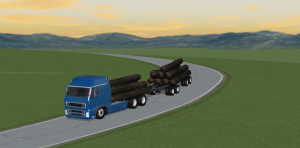
The combination was found to have an acceptable level of rollover stability. This allowed inherent vehicle stability issues to be ruled out as a contributing factor. The AIBN reviewed the road geometry and identified that the curvature of the entry ramp itself was unfavourable. The tightest part of the curve was located near the end of the ramp, immediately prior to the start of the acceleration area.
The vehicle’s speed profile during the crash had been recorded by its on-board telematics system. The data showed that the vehicle had slowed for the curve, and then started to accelerate for the freeway entry. It was travelling at 49 km/h when the rollover occurred. Using the simulation models, Advantia calculated that the maximum safe speed for the vehicle on that part of the curve was 33 km/h.
The output of Advantia’s reconstruction is illustrated in the following chart. The chart shows the Load Transfer Ratio (LTR) experienced by the trailer in two scenarios: when travelling at the recorded speed profile, and the calculated maximum safe speed. For the recorded speed profile, the LTR reaches a value of 1.0, indicating that rollover occurred. The recommended maximum safe level of LTR for this type of manoeuvre is 0.6. Hence, Advantia iterated travel speed and re-ran the simulations until the level of load transfer approached 0.6 but did not exceed it. The resulting speed was 33 km/h.
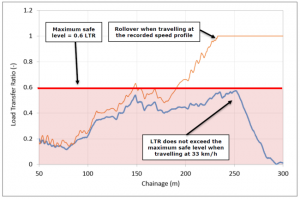
These findings led the AIBN to deem the crash to be the result of the failure of the driver to properly account for the vehicle’s performance in relation to the geometry of the road. The AIBN’s final report (Norwegian language version) can be accessed here. A short summary is provided in English.
Further investigation by the AIBN revealed that entry ramp road design guidelines do not consider heavy vehicle stability. The AIBN subsequently advised the Norwegian Public Roads Administration to review its design and construction requirements for entry ramps to cater for heavy vehicles.
In the crash investigation process, it is often straightforward to list the causal or contributing factors, but much harder to determine their relative level of contribution. This makes the task of developing robust remedial actions very difficult.
For example, a preliminary investigation may identify that a road is narrow, has a sharp curve with adverse crossfall, that the driver was exceeding the posted speed limit by 10 km/h, that the vehicle had worn shock absorbers, and that it was also loaded incorrectly. The determination of the relative contribution of these factors lies in the realm of heavy vehicle simulation. Advantia’s software can model these parameters, and vary any one of them independently to investigate its effects.
Preventing rollover crashes from occurring in the first instance should be the ultimate goal. The key to achieving this is to learn from previous events and develop mitigating actions for the future. For these reasons, every crash should be the subject of a formal investigation, and simulation used wherever necessary to comprehensively quantify the root cause.
Please contact Advantia for more information.

